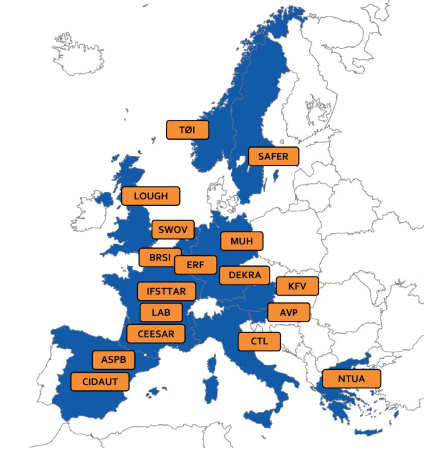
To be effective road safety policies must be informed by accurate information about accident risk factors and measures. Recent research suggests that infrastructure design guidelines may not always guarantee safety, and policy-makers and infrastructure managers need evidence-based support to identify problems and apply the right interventions. The SafetyCube – Safety Causations, Benefits and Efficiency is a research project funded by the European Commission under the Horizon 2020 research framework programme, involving 17 partners from 12 EU countries. SafetyCube aims to generate new knowledge about accident risk factors and the effectiveness of measures relevant to Europe, and to structure this information in a Decision Support System (DSS). Particular emphasis is put on road infrastructure safety, within a safe systems approach. A taxonomy of infrastructure risk factors and measures was developed alongside a methodological framework which was implemented in order to identify and quantify the relevant risk factors, and where possible to undertake a meta-analysis of existing research on infrastructure risk factors and the effects of measures (e.g. Crash Modification Factors, but also other forms of safety effects). Particular emphasis is placed on a number of “hot topics” within road infrastructure safety, namely: (i) road safety management (road safety impact assessment, road safety audits, roads star rating e.g. EuroRAP, etc.); (ii) self-explaining and forgiving roads (simpler and more readable road design standards, related traffic arrangements for VRUs, etc.); (iii) ITS applications (V2I, cooperative systems, etc.); (iv) urban road safety measures (stop-advanced-zones for motorcycles, traffic calming measures, bicycle lanes etc.). The analyses are carried out in close cooperation with road infrastructure stakeholders across Europe.
| ID | pc251 |
| Presentation | |
| Full Text | |
| Tags | impact assessment, road infrastructure, road safety measures |







